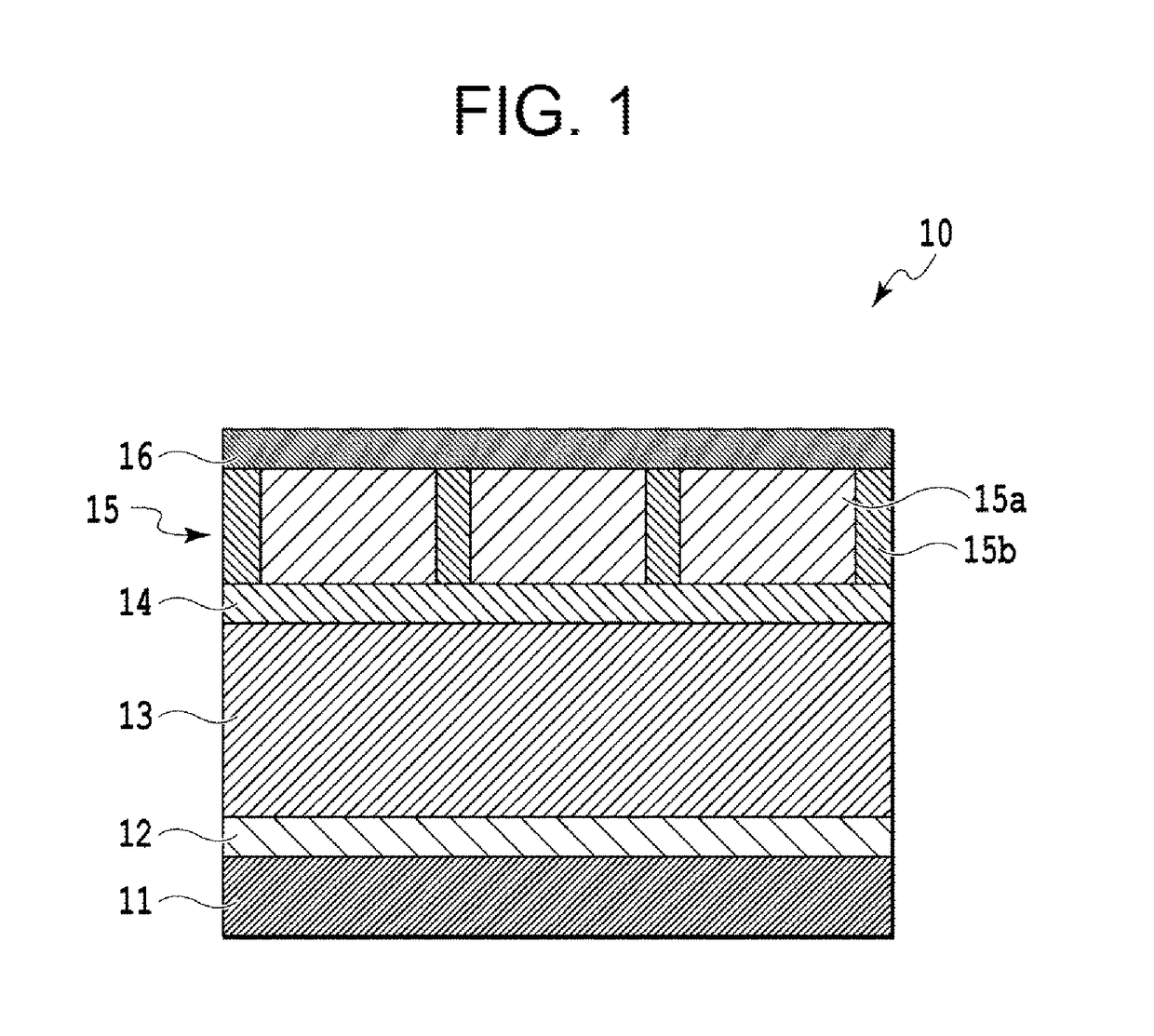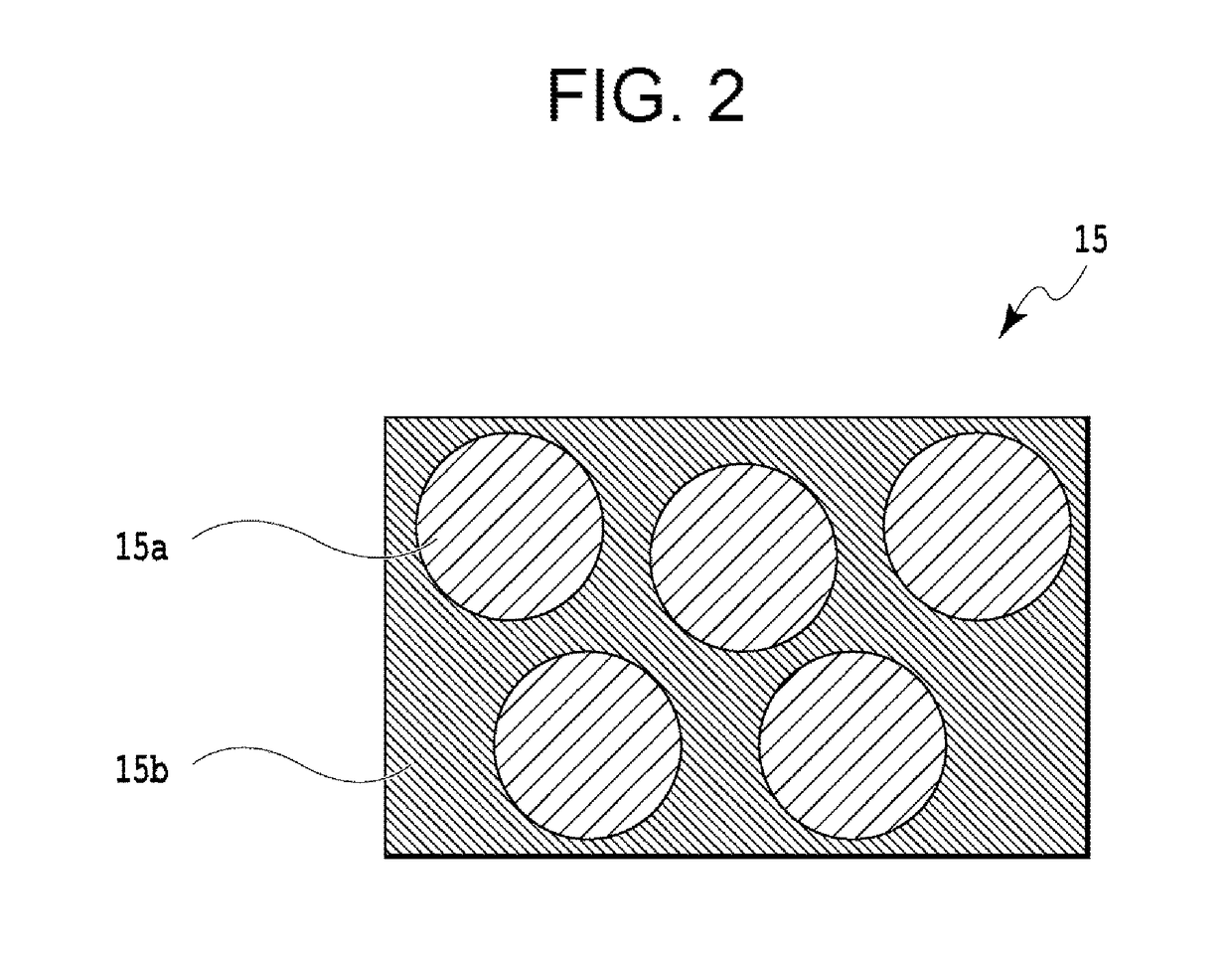Perpendicular magnetic recording medium
a magnetic recording medium and perpendicular magnetic technology, applied in the field can solve the problems of insufficient orderly creation of alloys, inability to maintain stably magnetic field, insufficient magnetic anisotropy constant and coercivity of perpendicular magnetic recording medium, etc., to achieve high coercivity, reduce magnetic reversal field, and high magnetic anisotropy constant
- Summary
- Abstract
- Description
- Claims
- Application Information
AI Technical Summary
Benefits of technology
Problems solved by technology
Method used
Image
Examples
example 1
[0072]A chemically reinforced glass substrate (N-10 glass substrate manufactured by HOYA Corporation) was used as the non-magnetic substrate. The layers ranging from the Ta-based adhesion layer to the C-based protective film were formed using an in-line type film forming apparatus without exposing the layers to the atmosphere. A Ta-based adhesion layer having a thickness of 5 nm was formed in an Ar gas atmosphere according to a DC magnetron sputtering method using a pure Ta target. Further, a Cr-based underlayer having a thickness of 20 nm was formed in an Ar gas atmosphere according to a DC magnetron sputtering method using a pure Cr target. Subsequently, a MgO-based seed layer having a thickness of 5 nm was formed according to an RF sputtering method using a MgO target in a state where the substrate was heated to 300° C. When the MgO layer was formed, the pressure of the Ar gas atmosphere was 0.02 Pa and the RF power was 200 W. Subsequently, a FePt—GeO2 layer was formed as a magne...
example 2
[0073]A FePt—C layer was formed as the first magnetic recording layer in the following manner. Specifically, the substrate was heated to 450° C., and then, the FePt—C layer having a thickness of 2 nm was formed according to a DC magnetron sputtering method using a target including FePt and C. The target including FePt and C was adjusted so as to have a composition of 60 vol % of FePt and 40 vol % of C during deposition. When the FePt—C layer was formed, the pressure of the Ar gas atmosphere was 1.0 Pa and the input DC power was 25 W. Subsequently, a FePt—GeO2 layer was formed as the second magnetic recording layer in the following manner. Specifically, the substrate was heated to 450° C., and then, a FePt—GeO2 layer having a thickness of 7 nm was formed according to a DC magnetron sputtering method using a target including FePt and GeO2. The target including FePt and GeO2 was adjusted so as to have a composition of 75 vol % of FePt and 25 vol % of GeO2 during deposition. When the Fe...
example 3
[0074]Layers were formed using the same method as used in Example 2 except that the FePt—GeO2 layer of Example 2 had a thickness of 3 nm.
PUM
| Property | Measurement | Unit |
|---|---|---|
| thickness | aaaaa | aaaaa |
| thickness | aaaaa | aaaaa |
| thickness | aaaaa | aaaaa |
Abstract
Description
Claims
Application Information
 Login to View More
Login to View More - R&D
- Intellectual Property
- Life Sciences
- Materials
- Tech Scout
- Unparalleled Data Quality
- Higher Quality Content
- 60% Fewer Hallucinations
Browse by: Latest US Patents, China's latest patents, Technical Efficacy Thesaurus, Application Domain, Technology Topic, Popular Technical Reports.
© 2025 PatSnap. All rights reserved.Legal|Privacy policy|Modern Slavery Act Transparency Statement|Sitemap|About US| Contact US: help@patsnap.com



